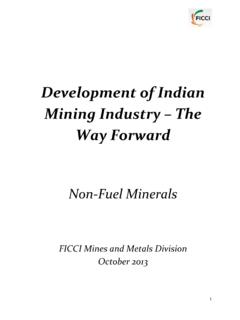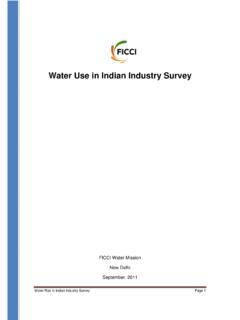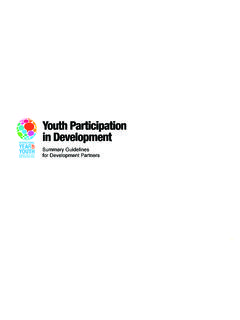Transcription of Higher Education in India: Vision 2030
1 Higher Education in india : Vision 2030. FICCI Higher Education Summit 2013. Circa 2030: Higher Education in india 2030. This year marks 80 years of constitutional democracy, 40 years of economic liberalisation, and 20 years of accelerated educational reform. While each of these is a milestone in itself on the road to india 's success, the last of these is perhaps the most momentous for india at a time when the world's oldest civilisation is also its youngest nation. Today, the median age of india 's billion strong population is a mere 32; a good ten years lower than most other nations in the world. Today, india is the largest contributor to the global workforce, its working age population surpassing 950 million. It is no surprise then that, india has emerged to be the world's third largest economy an achievement underpinned, no doubt, by its unique demographic advantage, but also a prospect that would not have translated into reality if not for the country's pioneering reforms in university Education over the past 20 years.
2 Over the last two decades, india has remarkably transformed its Higher Education landscape. It has created widespread access to low-cost high-quality quality university Education for students of all levels. With well-planned well expansion and a student-centric learning-driven driven model of Education , india has not only bettered its enrolment numbers but has dramatically enhanced its learning outcomes. A differentiated three-tiered three university system where each tier has a distinct strategic objective has enabled universities to build on their strengths and cater across different categories of educational needs. Further, with the effective use of technology, india has been able to resolve the longstanding tension between excellence and equity. india has also undertaken large-scale large reforms to better faculty-student ratios by making teaching an attractive career path, expanding capacity for doctoral students at research universities and delinking educational qualifications from teaching eligibility.
3 As a result, today, india 's 70 million student population is a force to reckon with. Among them are potential thought leaders researchers and academics positioned at the helm of knowledge creation. Among them are entrepreneurs and executives of the future, industry-ready ready and highly sought after. From among them emerges india 's massive workforce, the engine of its US$13 trillion economy. Our universities today don't face a shortage of academics ready to be recruited as faculty, just as our industries find adequate talent that can be inducted with minimal on-boarding. on Despite these strides of progress, india 's Higher Education institutions are not yet the best in the world india has fewer than 25 universities in the top 200. Yet, india 's post--secondary Education system is increasingly recognised as being the best for the world.
4 The promise of excellence and equity has made the Indian Higher Education system worthy of emulating, certainly in the developing world that faces the same challenges as india did in the decades prior to its Higher Education reforms, but less obviously in pockets of the developed world which is under tremendous pressure to provide Higher Education in cost-effective effective ways. However, india has emerged as a regional hub of Education and attracts global learners from all over the world. Students, faculty and employers now flock to india to learn, teach and recruit as india dons the mantle of a Higher Education leader and emerges the role model for delivering high-quality high Education to vast numbers at low cost. In short, india has gone from a post-secondary secondary Education system that was nearly broken to one that is touted to be best-in-class class for the 21st century world in less than two decades, and it is worth taking a closer look at how the country made this remarkable transformation.
5 Higher Education in india : Vision 2030 Page 7.



















